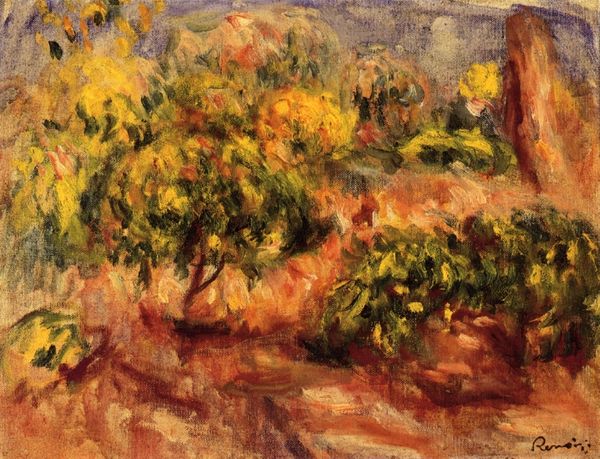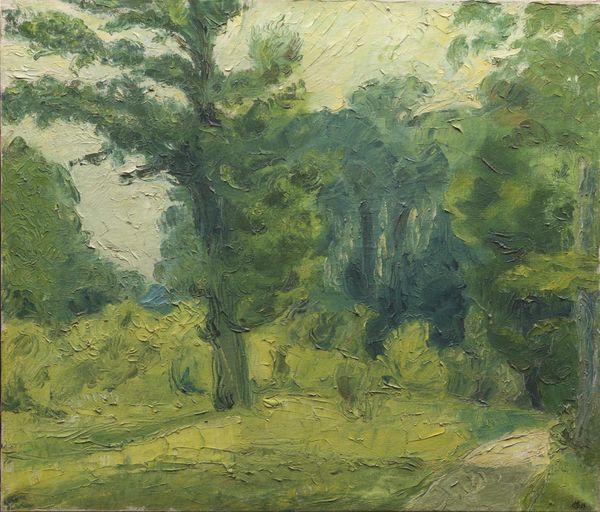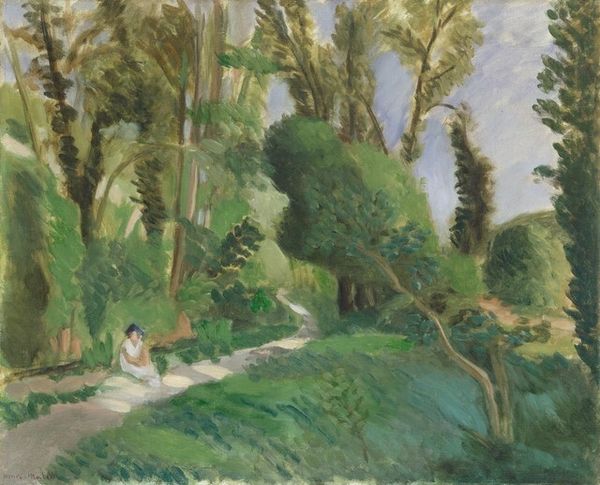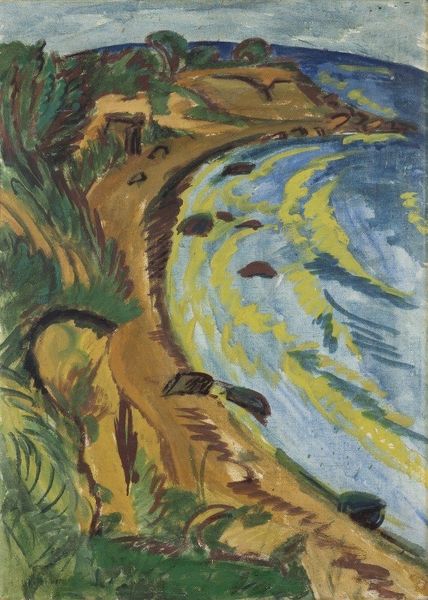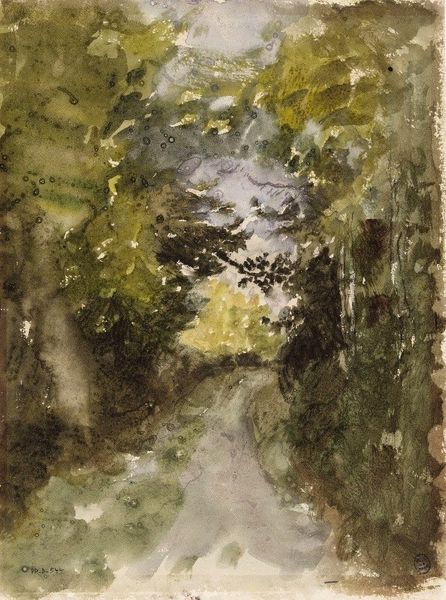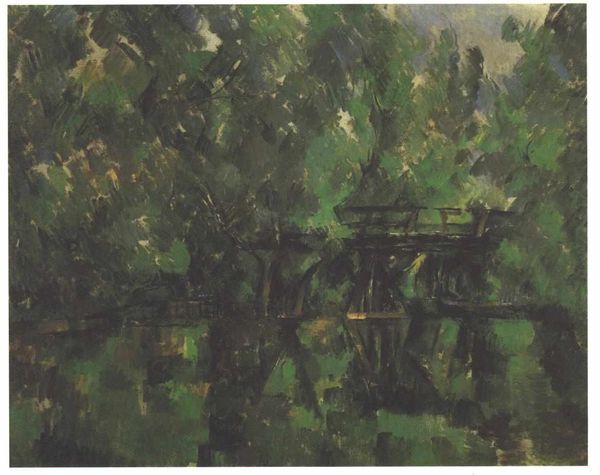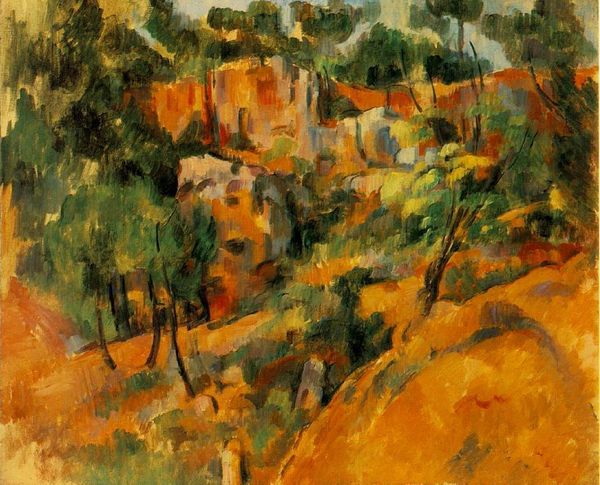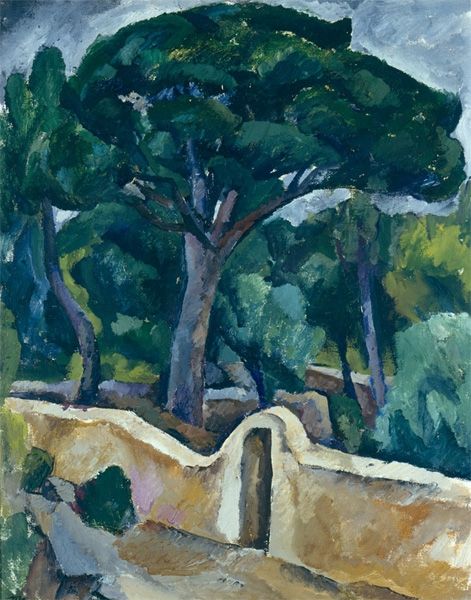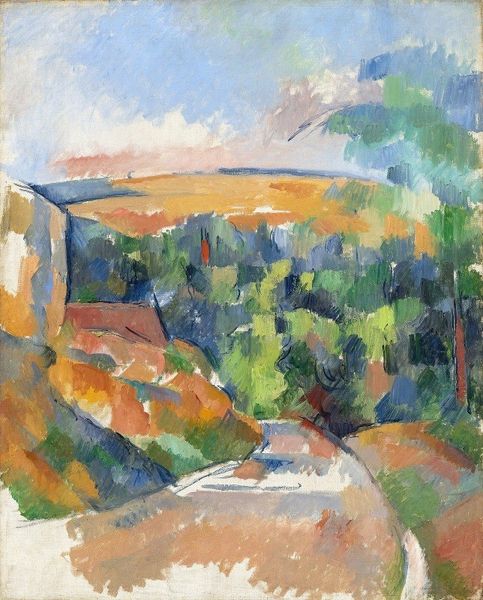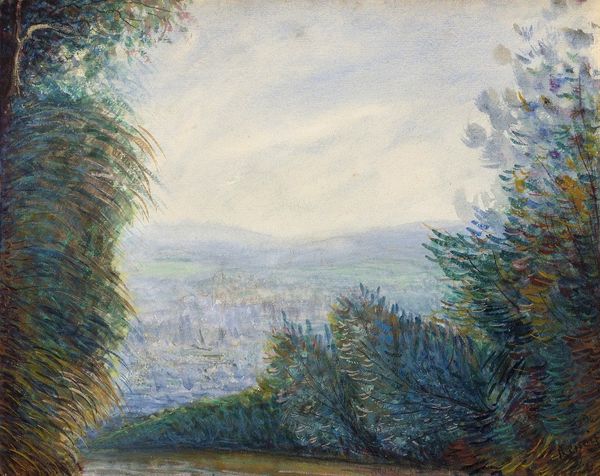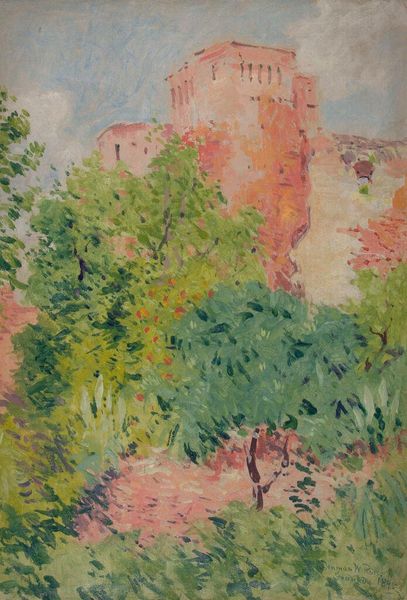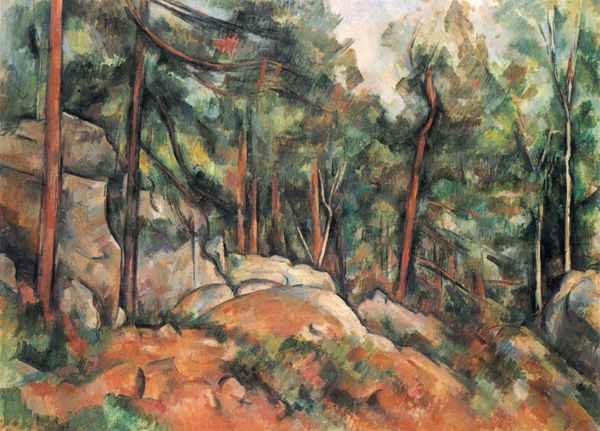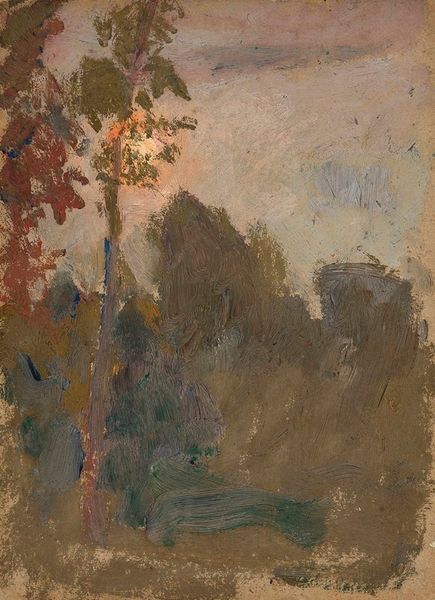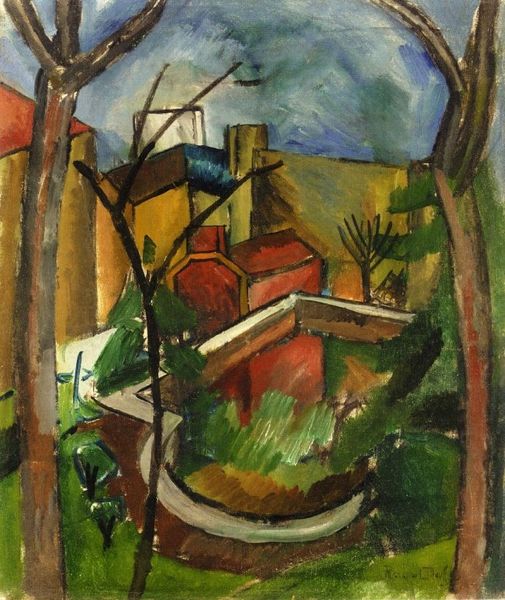
painting, oil-paint, impasto
#
painting
#
oil-paint
#
landscape
#
oil painting
#
impasto
#
geometric
#
post-impressionism
#
modernism
Copyright: Public Domain: Artvee
Editor: This is Paul Cézanne's "The Red Rock," an oil painting dating back to around 1895. What strikes me is the way the visible brushstrokes create a real sense of texture. How would you unpack this from your perspective? Curator: It’s vital to recognize Cézanne’s manipulation of his materials. Notice the density of the impasto – how it emphasizes the materiality of paint itself, disrupting traditional illusionistic landscape painting. Consider also where Cézanne sourced his pigments. Were they local? Did their extraction involve specific labor practices? Editor: That's fascinating. I hadn’t really considered where the materials originated. It makes me think about the actual physical process. Curator: Exactly! Cézanne’s process isn’t just about personal expression; it reflects a specific engagement with industrial advances in pigment production, distribution networks, and, ultimately, consumption patterns of art supplies. What do you think about the seemingly rough application of paint? Editor: Well, at first glance, it feels unfinished, but now that you mention the materials, it speaks more to an intentional focus on the medium, the physical labor, right? It's almost like a form of documentation. Curator: Precisely. He reveals the artifice of the landscape genre by showcasing the means of production. In doing so, Cézanne isn't merely depicting nature, he's deconstructing the very idea of it through his engagement with material realities. Editor: It's definitely shifted my view. I will never look at paint the same way. Curator: Hopefully, next time you’ll think about all those factory workers who made paint affordable, rather than only Cézanne’s brush.
Comments
No comments
Be the first to comment and join the conversation on the ultimate creative platform.
